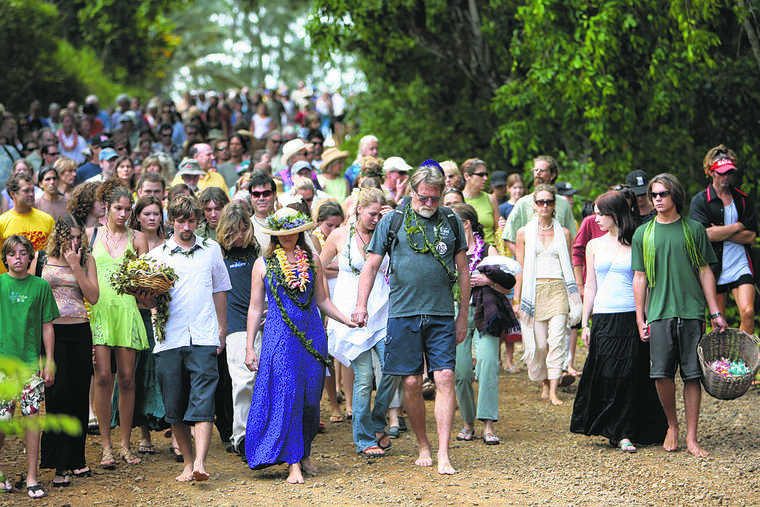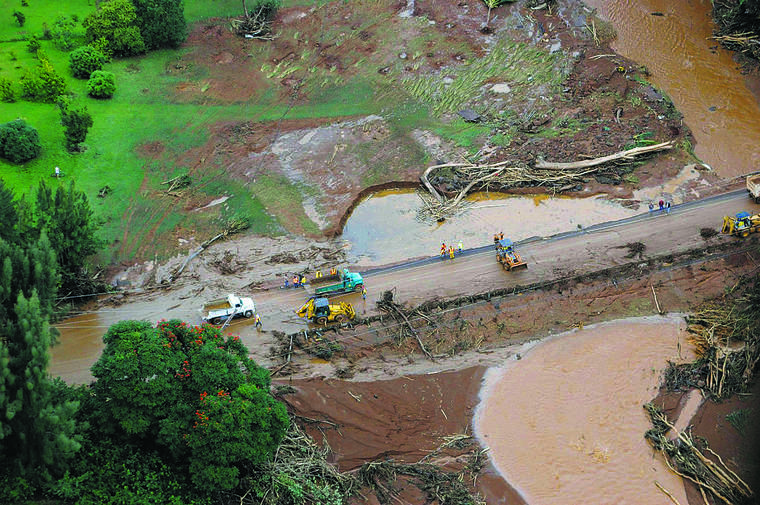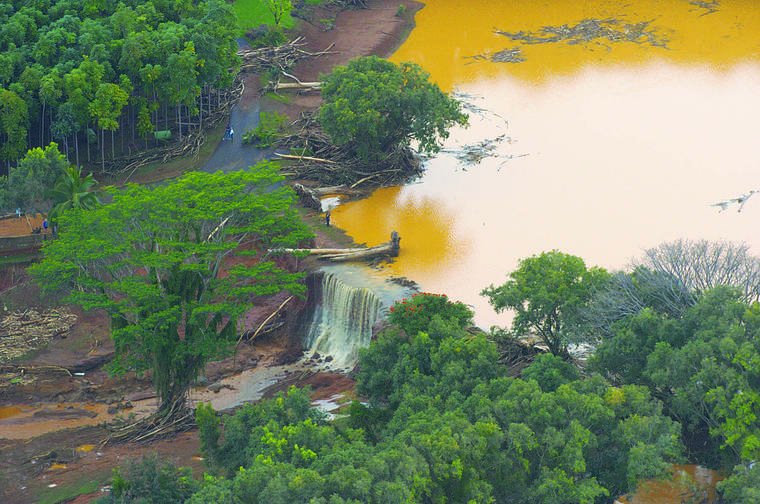Hawaii officials struggle to keep dams safe



HONOLULU Many dams across Hawaii, like those in other parts of the country, are aging and in a state of decay.
HONOLULU — Many dams across Hawaii, like those in other parts of the country, are aging and in a state of decay.
Hawaii is scattered with privately-owned, earthen dams and reservoirs that were built in the plantation era over a century ago. State officials struggle to effectively regulate the dams, and most people who live nearby have no idea they could be in danger.
An Associated Press investigation shows that virtually every one of Hawaii’s 130 state-regulated dams are considered high hazard, meaning they could cause death if they were to fail. Of those, 59 are considered to be in poor or unsatisfactory condition.
In a state that consistently claims the highest annual rainfall totals in the nation, and one that is often the target of severe tropical weather, the potential for a deadly dam collapse is real.
Until this year, the last fatal dam failure in the U.S. occurred on Kauai in 2006, when an earthen wall of Kaloko Reservoir collapsed during heavy rain and sent a wave of water and mud rushing down a hillside. Seven people, including a pregnant woman, were killed on Bruce Fehring’s property. He lost his daughter, son-in-law and grandson.
“It was raining and it was raining and it was raining,” Fehring recalled in a recent interview with the AP. “But it had rained that heavily many times before.”
Fehring, who was not there at time, got an early morning phone call from a neighbor saying something terrible had happened. By the time he arrived hours later, he was shocked by the scene.
“I looked down into the valley and it was almost unrecognizable, it was like the valley was full of water,” he said. “The entire far part of my property was scoured, including my house.”
It took some time for the magnitude of the disaster to set it in, he remembered.
“I went, ‘Oh my God, everything’s been washed away,’” Fehring said. “The more I saw, the more hopeless it became because of how much was washed away. I mean, you have no idea the power of water (until) you see what it can do in a very short amount of time.”
It took days to find some of the victims. Others were never found.
It turned out that the rain was not the only problem.
Dam owner James Pflueger pleaded no contest to felony reckless endangerment and his property company pleaded no contest to seven counts of manslaughter. Prosecutors said Pflueger had filled in the dam’s spillway while attempting to make space for a waterfront development.
Though categorized by the state as low hazard at the time it failed, Kaloko Reservoir is now listed as a high-hazard facility in poor condition. Records show the dam remains largely unrepaired.
A two-year investigation by The Associated Press identified at least 1,680 dams nationwide that are rated as high-hazard because of the potential for loss of life if they failed and are considered to be in poor or unsatisfactory condition.
Emergency plans obtained by the AP indicate that thousands of people living and working downstream could be at risk if those dams were to catastrophically fail, while separate inspection reports cite a variety of problems. Those include leaks that can indicate a dam is failing internally, unrepaired erosion, holes from burrowing animals and extensive tree growth, which can destabilize earthen dams. In some cases, inspectors also flagged spillways that are too small to handle the amount of water that could result from increasingly intense rainstorms due to a changing climate.
The AP’s investigation covers the U.S. territory of Puerto Rico but excludes five states that did not fully comply with records requests.
The potential danger to downstream communities is compounded by climate change, which is expected to cause more frequent and severe storms that could overwhelm deficient dams and out-of-date spillways.
In Hawaii, a review of state inspection records acquired by the AP shows dozens of dams and reservoirs with poor and unsatisfactory marks for critical elements of dam safety, and many have been getting low marks for over a decade.
Hawaii’s engineer in charge of the dam safety program, Edwin Matsuda, said the process of getting private owners to comply is challenging. Questions over ownership, current and future land use, and cost complicate the discussions, he said.
“We understand that a lot of the deficiencies and the studies and repairs that we’re asking these owners to do cost a significant amount of money,” Matsuda told the AP earlier this year.
He said that if owners do not start complying with repair orders, the state will consider imposing fines.
“We are starting to . put such owners on notice to come up with their plans and to stick with their plans,” he said. Fines can range from $500 to $2000 per violation.
He said many of the dams functioned for 100 years or so, but residential developments downstream have turned them into high hazard structures.
Last year, for example, heavy rains from a tropical storm prompted an evacuation warning to about 10,000 Honolulu residents as water levels in a reservoir above their neighborhood rose to dangerously high levels.
Workers siphoned and pumped water out of the reservoir, which was built in 1905 and holds 21 million gallons (80 million liters) of water.
Sherwood Chock, an artist who has lived in the neighborhood for nearly 50 years, told the AP at the time that officials had never warned about high water levels in the reservoir.
That’s not unusual. When Bruce Fehring bought his Kauai land in the late 1980s, he said the two reservoirs that were above his new home were never mentioned.
He urged more government transparency and public awareness of the dangers posed by Hawaii’s aging dams.
“The state should be given carte blanche to inspect all dangerous dams,” he said. “All the inspections should become public knowledge. And probably should be made to be printed in the local papers.”


